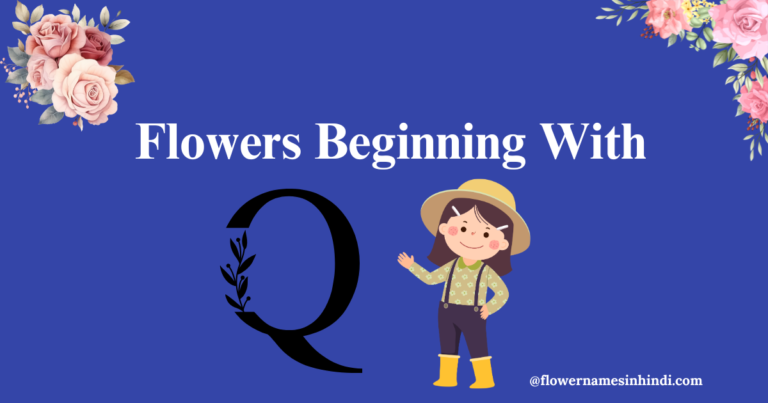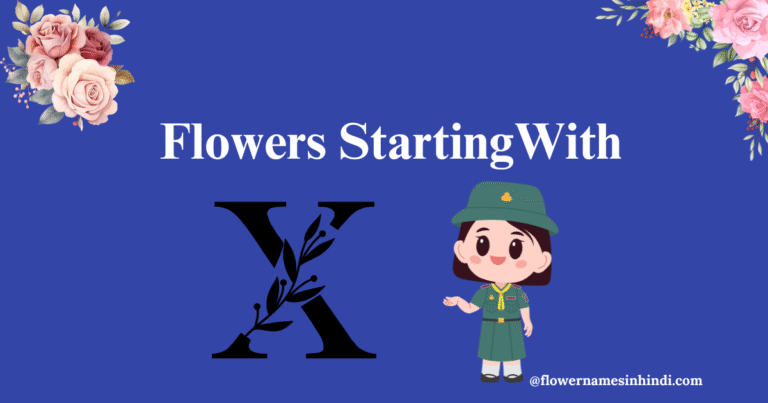15+ Interesting Flowers That Start With J With Stunning Pictures
Flowers that start with J are rare but full of charm and character. You may already know a few, but there are many more waiting to surprise you. From the sweet scent of Jasmine to the graceful look of Jacobs Ladder, each J flower adds beauty and meaning to gardens and floral collections.
If you want more floral inspiration, explore our dedicated blogs on flowers that start with G and flowers with H. Do not miss our latest posts for fresh ideas!
Here is a list of beautiful flowers that start with J, each adding charm, color, and uniqueness to gardens and landscapes.
✅ Jasmine
✅ Jacob’s Ladder
✅ Japanese Anemone
✅ Jonquil
✅ Jessamine
✅ Jungle Flame
✅ Japanese Iris
✅ Jewelweed
✅ Jaborosa
✅ Jatropha
Justicia

Justicia is an aesthetic flowering plant that belongs to the Acanthaceae family. It is the largest genus of this family. They are also known as the “Water-willow” and “Shrimp plant.” Justicia is an evergreen, perennial small shrub with attractive petals, available in cream, white, yellow, violet, orange, or pink shades.
It is hardy and can even survive at −4 °C. It is a tropical plant and can grow in both outdoor and indoor environments; they can reach up to 3 feet.
Justicia leaves are used in traditional remedies to treat anaemia, fever, inflammation, liver disease, diarrhoea, arthritis and respire-gastrointestinal problems.
| Scientific Name | Justicia |
| Blooming Time | Evergreen |
| Symbolism | Justice and balance |
| Species | Over 900 |
| Native To | Tropical and subtropical regions of America, India, and Africa |
Jewelweed

Jewelweed is also famous as “Touch-me-not,” an annual plant that belongs to the Balsaminaceae family. It has trumpet-shaped yellowish-orange flowers. They are primarily grown in wet, calm, and shaded areas.
They are edible, but eating them in large quantities is not recommended. The juice of jewelweed’s leaves is used to treat skin rashes; on the other hand, its stem juice has been widely used to treat athlete’s feet.
| Scientific Name | Impatiens capensis |
| Blooming Time | Summer to early fall |
| Symbolism | Peace and Elegance |
| Number of Species | Over 1000 Species |
| Native To | North America |
Jasmine | Flowers That Start with J
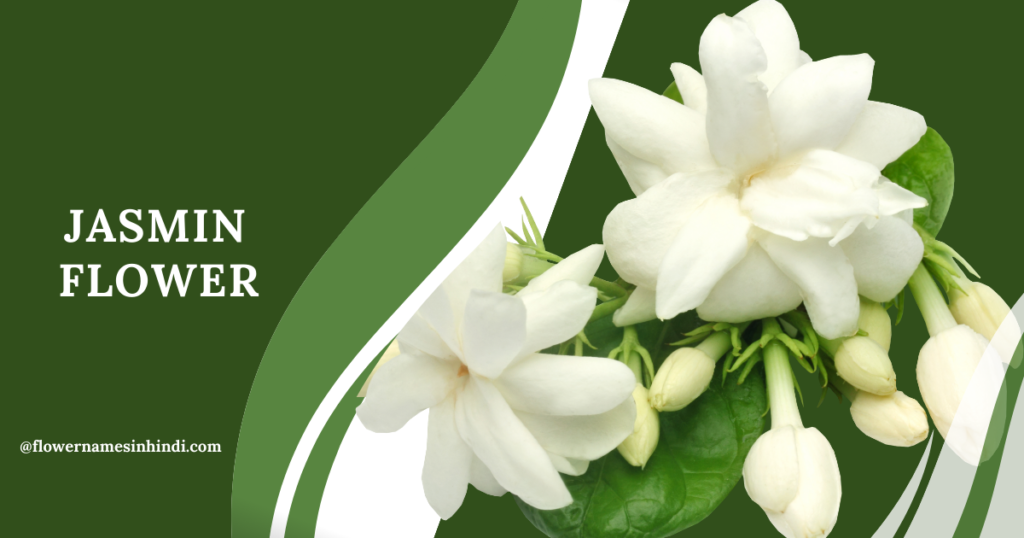
Jasmine, a symbol of love and romance, blessed us with its sweet and soothing fragrance. It belongs to the Oleaceae family. They have delicate white or yellow fragrant flowers. The flowers can grow up to 2.5 cm in diameter.
They want full to partial shade and well-drained, fertile, moist, sandy loamy soil to grow. These flowers are beautiful and are a part of many fragrances, teas, and reflexology. Berries are the fruit of jasmine flower that turn black when mature.
Despite the refreshing look, Jasmin also has some health benefits, like improving the immune system, optimizing hormonal levels, increasing blood circulation, and relieving stress.
| Scientific Name | Jasminum |
| Blooming Time | Spring to summer |
| Symbolism | Romance, Love, and Beauty |
| Number of Species | Around 200 Species |
| Native To | Temperate and tropical regions of Eurasia, Africa, and Oceania. |
Jatropha

Jatropha is one of the beautiful flowers that begin with J, which belongs to the Euphorbiaceae family. The other common names of this flower are “Physic nut” or “Nettlespurge.” The word Jatropha comes from the Greek words “ἰατρός” ” which means “Physician,” and “τροφή,” which defines “Nutrition.”
It is a tropical succulent plant that has bunches of dark red colored flowers. It is widely used as a decorative small tree and is preferred for its drought tolerance and vibrant flowers.
| Scientific Name | Jatropha |
| Blooming Time | April to November |
| Symbolism | Healing and Protection |
| Number of Species | Around 170 Species |
| Native To | America and Africa |
Japanese Maple
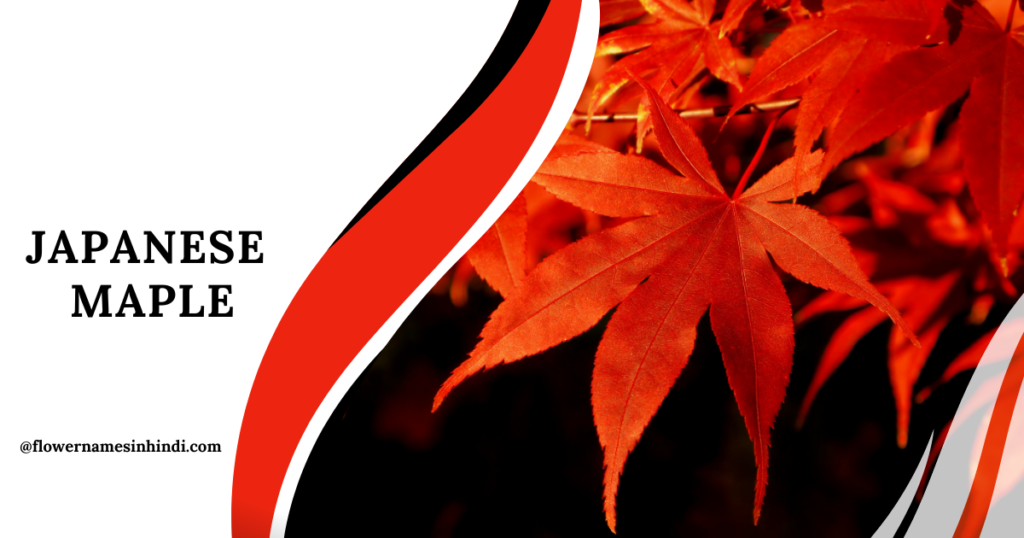
The most distinctive feature of Japanese maples is the highly lobed, hand-shaped leaves, which come in various colors, including green, red, and purple. They can grow 2-30 feet tall and extend out, depending on the species.
They prefer partial shade, especially in hotter areas. Their leaves may get burned by continuous, direct sunlight. They thrive on well-drained, a bit acidic soil with abundant organic materials.
| Scientific Name | Acer palmatum |
| Blooming Time | May to June |
| Symbolism | Longevity |
| Number of Species | 3 main species with numerous varieties |
| Native To | Japan, Korea, and China |
Japanese Primrose | Flowers That Start with J

Japanese Primroses are usually shade-loving perennials flowering plants that belong to the Primulaceae family. It is commonly known as the “Queen of primroses” or “Valley red.” They have clusters of bright purple flowers on vertical stems.
The plant prefers shady, moist, damp, humus-rich soil such as those found at the corners of ponds and streams.
The interesting information about Japanese Primrose is that its first photograph was printed in 1871.
| Scientific Name | Primula japonica |
| Blooming Time | Late spring to early Summer |
| Symbolism | Youth and Innocence |
| Number of Species | 425 Species |
| Native To | Japan |
Jasmine Tobacco
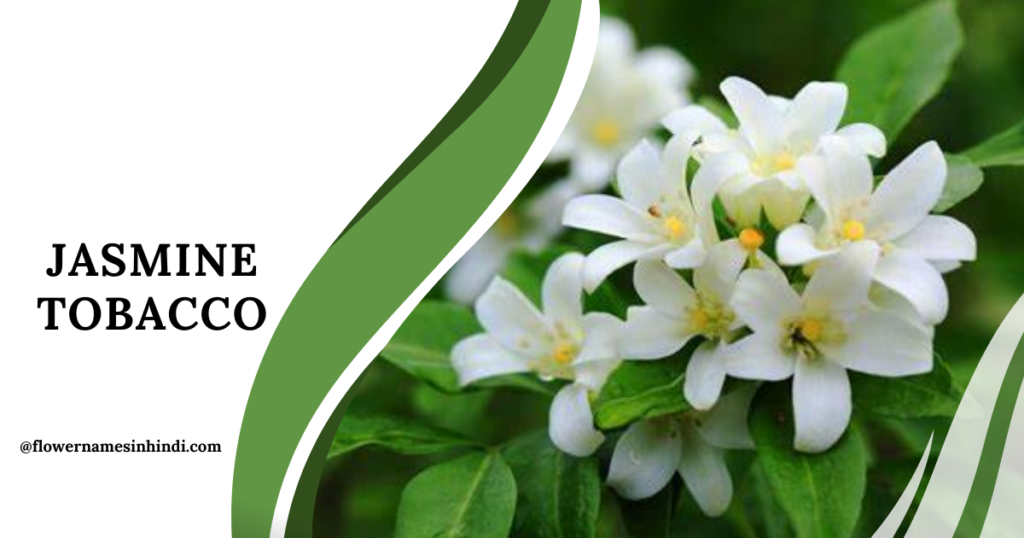
Jasmine tobacco is a famous species of tobacco, also known as “Winged tobacco,” “Sweet tobacco,” and “Persian tobacco”, belonging to the Solanaceae family.
This fragrant annual or prone perennial has tubular flowers in white, green, pink, and red color. It prefers well-drained soil and full sunlight to partial shade for flowering.
They can grow up to 30 to 60 cm in height. Gardeners do not crush it like cigarette tobacco; instead, they break it up by hand. The plant gives off a refreshing evening fragrance and makes a perfect choice for Moon Gardens.
| Scientific Name | Nicotiana alata |
| Blooming Time | Summer to first frost |
| Symbolism | Purification and Attraction |
| Number of Species | Approximately 67 Species |
| Native To | South America |
Jupiter’s Beard

Jupiter’s Beard is a famous garden plant mostly grown for ornamental purposes and belongs to the Caprifoliaceae family. The other common names of this satisfying flower are “Fox’s brush,” “Kiss-me-quick,” “Devil’s beard,” and “Spur valerian.”
It is a perennial plant in bunches of cute little, star-shaped florets in bold red, white, and pink shades. They need nutrient-rich soil and full sunlight as they are pretty drought-tolerant. It is also a great source of pollination as It can attract bees and butterflies.
| Scientific Name | Centranthus ruber |
| Blooming Time | May to October |
| Symbolism | Strength and Beauty |
| Number of Species | 12 Species |
| Native To | Mediterranean region |
Jack-in-the-pulpit

Jack-in-the-Prilli is a North American flowering plant that belongs to the Araceae family. People also call it Indian turnip, Brown dragon, and Big onion. The plant got its name from a preacher giving a sermon because its white flower looks like a head inside a hood.
Jack-in-the-pulpit prefers shade and grows best in rich, lush, making it ideal for a garden. It has calcium oxalate crystals that may irritate and burn the mucus membranes if ingested.
Native Americans used its root to treat sore eyes, rheumatism, pneumonia, snakebites, and induce infertility.
| Scientific Name | Arisaema triphyllum |
| Blooming Time | Spring |
| Symbolism | Mystery |
| Number of Species | 4-6 Species |
| Native To | Eastern North America |
Japanese Toad Lily | Flowers That Start with J

Toad lily is a Japanese herbaceous plant that belongs to the Liliaceae family. The petals are dotted in white, purple, or pink. They prefer moist but well-drained nutrient-rich soil for best flourishing and grow well in shaded rocky cliffs and woodland gardens.
They have many species, each with unique features and beauty and from fragrant jasmine to the exotic Japanese toad lily, these florets can make your greens more attractive in terms of aroma and aesthetics.
| Scientific Name | Tricyrtis hirta |
| Blooming Time | September to October |
| Symbolism | Good Fortune |
| Number of Species | 22 Species |
| Native To | Japan |
Jasmine Nightshade

Jasmi Nightshade is commonly known as “Potato climber” or “Potato vine.” It is an evergreen vine belonging to the Solanaceae family. The white or pale blue flowers grow in groups of almost 20 in branched florescence.
It is robust and can survive down to −10, but it prefers a sheltered place with well-drained soil in full sunlight for proper growth.
Jasmin Nightshade is poisonous and can cause abdominal pain if consumed. Wear gloves when handling this toxic plant.
| Scientific Name | Solanum laxum |
| Blooming Time | Spring to fall |
| Symbolism | Sensuality and Mystery |
| Number of Species | Approximately 1500 Species |
| Native To | South America |
Jerusalem Sage

Jerusalem sage is a beautiful flowering plant belonging to the Lamiaceae family. It is a Mediterranean native, perennial small evergreen shrub that can grow up to 3 feet tall and 5 feet wide.
They have scented leaves that grow oval-shaped, typically 2-4 inches long and wrinkly, grey-green with a white base. They require well-drained soil and direct sunlight to bloom; they are also drought-tolerant.
It is a tea that calms the throat and stomach, improves digestion, and helps with weight loss and period cramps. Its flowers attract butterflies and hummingbirds. Use it in an herb garden as an accent, in raised planters or containers, or in vegetable gardens.
| Scientific Name | Phlomis fruticosa |
| Blooming Time | Late spring to early summer |
| Symbolism | Spirituality and Wisdom |
| Number of Species | 120 Species |
| Native To | Cyprus, Greece, Italy, and Turkey |
Joe Pye Weed | Flowers Beginning With J

Jow Pay Weed is an herbaceous perennial flowering plant that belongs to the family of Asteraceae. It is also known as “Sweet-scented Joe Pye Weed”. It is an elegant species with clusters of dark purple flower heads attractive to bees, butterflies, and other pollinating insects.
Joe Pye Weed named after a New England Native American healer who used the plant to treat kidney stones and fevers. It is highly toxic to animals.
| Scientific Name | Eutrochium purpureum |
| Blooming Time | Summer to fall |
| Symbolism | Healing |
| Number of Species | 5 Species |
| Native To | Central North America |
Japonica Iris

The famous names of Japanese Irises are “Shaga,” “ Fringed iris,” and “Butterfly flower.” They have beautiful long, wide-spread petals in various colors, from blues, purples, pinks, and white.
Plant them in moist, slightly acidic soil with full to partial sun, and you will often see them growing around ponds.
| Scientific Name | Iris japonica, |
| Blooming Time | April to May |
| Symbolism | Trust |
| Number of Species | 3 main Species |
| Native To | China and Japan |
Japanese Knotweed

Japanese Knotweed, also known as “Asian knotweed,” belongs to the Polygonaceae family. Some apiculturists highly value its flowers as an essential nectar source for honeybees. It is an edible spring flower that can be eaten cooked or raw.
Despite being invasive, this plant is famous for its hardy, bamboo-like branches and clusters of thin, creamy-white flowers. This plant requires close monitoring and supervision to prevent uncontrolled growth, even though it is not very specific about what soil types or conditions it prefers.
| Scientific Name | Reynoutria japonica |
| Blooming Time | August to September |
| Symbolism | Resilience and Preserve |
| Number of Species | 4 main species |
| Native To | Asia, America, and Europe |
Conclusion
As we explored the world of flowers that start with J, we uncovered some truly fascinating blooms. We even discovered some stunning purple flowers like Japanese Wisteria and Jerusalem Sage, proving that nature never runs out of surprises!
And if yo are ready to explore even more, do not miss our main guide on Hindi flower names, a beautiful collection that brings together language, culture, and the timeless beauty of blooms.



